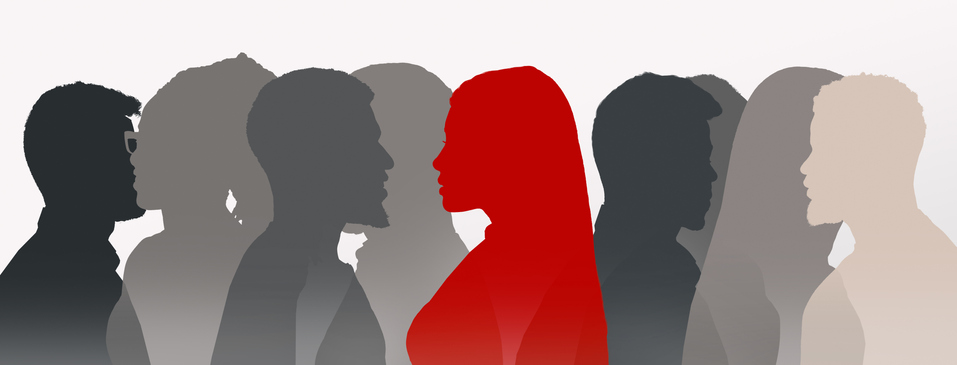
We as a species believe we are a good judge of character. We make snap judgements about someone we meet in a matter of seconds. What do we really have to work with? Our gut feeling? Someone’s aura? Their energy? Oh it’s the eyes right? Of course because they are truly a window to our soul. What if I were to tell you your judgement was worth sod all!
In fact our sense of judgement is so bad that even the “pros” whose sole purpose of existence is to gather intelligence and pull apart the good guys from the bad guys couldn’t tell if their own were lying to them. I’m talking about none other than the CIA. Yes, the Central.Intelligence. Agency. One of the world’s most powerful intelligence networks has been duped not once, not twice but one too many times for an organization that is vetting their agents at a level that is second to none. So what went wrong?
This story goes back to 1987 when one of Cuba’s most decorated agents Aspillaga decided to defect to the US. He had been named intelligence officer of the year in 1985 by CIA’s equivalent – the General Directorate of Intelligence and had received a handwritten commendation from none other than Fidel Castro himself. When news of his defection got out the Cuban spy service tracked him down and tried to assassinate him. Twice. The point being, his defection was kind of a big deal in the intelligence community – goes down in history of the Cold War as one of the greatest. But I digress. What he had to say to the CIA is the real bombshell – in fact it is one of the most humiliating failures of the CIA. What if someone were to say that pretty much the entire US intelligence operations in Cuba was a mockery, that all their “vetted and trusted” agents were in fact double agents working for Fidel Castro. The humiliation goes further because not only did Cuban intelligence know everything that was going on but they recorded it like a reality TV show, eventually releasing the footage as an eleven-part documentary series. The details and quality with which the Cubans captured everything made “You’ve been punk’d” look like amateur TV. This is the CIA we are talking about. Their JOB is to study people and figure what they are all about and they were caught completely clueless of their own agents.
This is probably not enough to convince you but unfortunately the history of our failures to judge someone at the highest level is very rich. This story is about Neville Chamberlain from 1938 when he was the Prime Minister of Great Britain, he was the predecessor to the more well-known PM of Britain – Winston Churchill. This was before World War II when Hitler was making plain his intention to take over Sudetenland – the German speaking part of Czechoslovakia. And that wasn’t even the problem. He could go take over Sudetenland all he wanted. If he decided to go any further, then that would be mean the start of World War II. We all know how that went down. Humor me. As the likes of Chamberlain, known for his showmanship, believed that if he met Hitler face-to-face he could charm him to reconsider. Hitler went on to not only say that Sudetenland was all he wanted, he even signed an agreement making clear his intentions not to go beyond. Chamberlain over his many meetings with Hitler concluded that “in spite of the hardness and ruthlessness I saw in his face, I got the impression that there was a man who could be relied upon when he had given his word.” Upon his return after his final visit in September 1938 Neville Chamberlain proudly waved the agreement, welcomed by a cheering crowd for his historic and proud achievement. All was well and good until six months later Hitler made a mockery of the agreement as he invaded the rest of Czechoslovakia and the world was war once again! A historic failure of judgement.
While these two stories are examples of colossal failures let’s look at something more everyday. This time from the perspective of a Brooklyn judge who faces the same challenge as Neville Chamberlain, but on a day-to-day basis – to pass character judgement on defendants charged with a crime and decide if they should be kept in jail or released on bail. This is the pre-trail phase when none of the facts are known and it was up to a judge to decide whether a 16-year-old arrested for a violent crime should be denied bail, only to end up in a “cage” at the notorious Rikers Island facility and potentially face “a riot waiting to happen at every turn”. Or what to do in the case of an older man involved in an incident with his girlfriend’s six year old grandson. If he denies bail his wife and 15 year old son who are dependents would be without an income, as he would lose his job. How does he decide what to do? He does what any astute man with years of experience would do, look deep into the defendants eyes and catch a glimpse into his soul so he may get a sense of who he really was.
And yet again they were all wrong. Thanks to a study by a Harvard economist, a couple of scientists and a bail expert from the University of Chicago, they evaluated the judge’s decisions using a computer program. The team pulled up the records of about half a million cases from NYC and found 80% of the defendants had been released by the judges. In contrast the AI program came to a drastically different conclusion. Both made their decisions using the same data. But in the case of the judges they made their final decision based on the in-person experience of their encounter with whatever data that was available to them. When they looked at the judges list they found that around 48.5% of the high risk individuals as classified by the program were released on bail. Mind you, the judges granted bail to 1 out of 2 high risk individuals that should have been kept behind bars. No wonder they committed a crime while on bail. In the same vein, the names on the list generated by AI was 25% less likely to commit a crime compared to the 400,000 people released on bail by human judges. It seems man is no match to machine? Or are we missing something? Would the judges be better off making decisions on data alone? Is the in-person interaction the culprit?
“Our judgement assumes a person’s demeanor is a true representation of who they really are. That by looking at someone in the eye we can actually see deep inside their soul. How wrong we are!”
Malcolm Gladwell, in his book “Talking to Strangers” thinks so. While what I have covered is only a tip of the iceberg when it comes to our inability to judge people. If I were to summarize the key learning. Our judgement assumes a person’s demeanor is a true representation of who they really are. That by looking at someone in the eye we can actually see deep inside their soul. How wrong we are! Remember Bernie Madoff, a seemingly empathetic and kind man stole $20 billion, robbing many of their hard-earned life savings. We took his outer demeanor to truly represent who he was, while in fact he was actually a narcissistic sociopath. Add racial bias to the mix and things can get further complicated. It is for the same reason that officer Brian Encinia misread the inner turmoil that Sandra Bland was going through in her life and took her apparent agitation over the traffic stop to point to something more sinister, which escalated the situation to a sad and unfortunate end. So how should we go about it? Honestly it doesn’t seem like there is an easy way, because the smartest among us can easily conceal their true self and do one harm. On the opposite end, an innocent person who has done nothing wrong could be having a bad day and end up in a bad situation where things go awry. How does one save oneself from harm by the likes of Bernie Madoff or avoid harming people like Sandra Bland. I have no idea. But one thing is for certain “What You See Is What You Get” doesn’t hold true when it comes to people.
